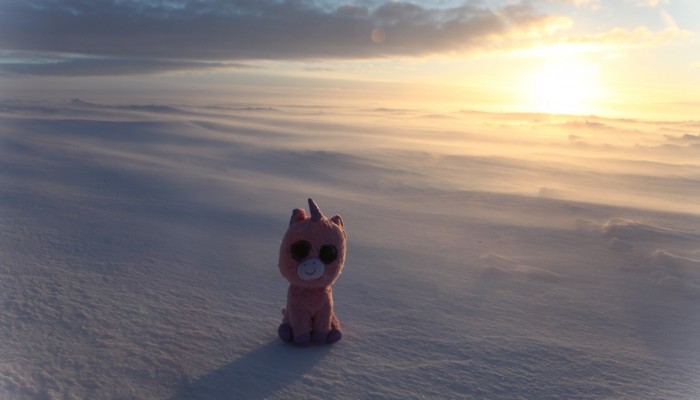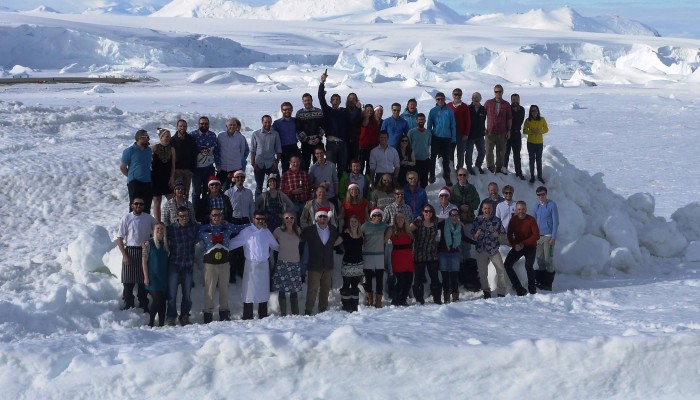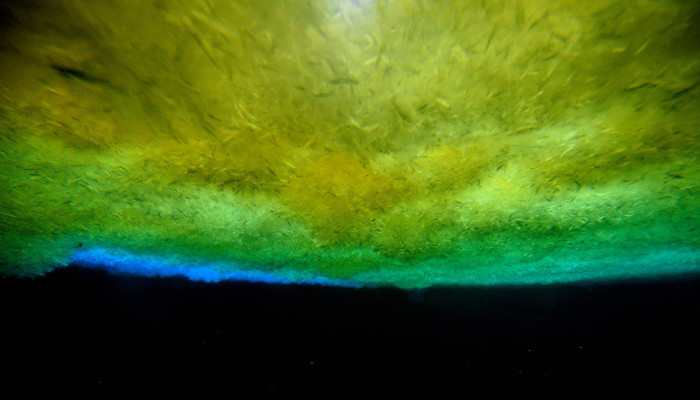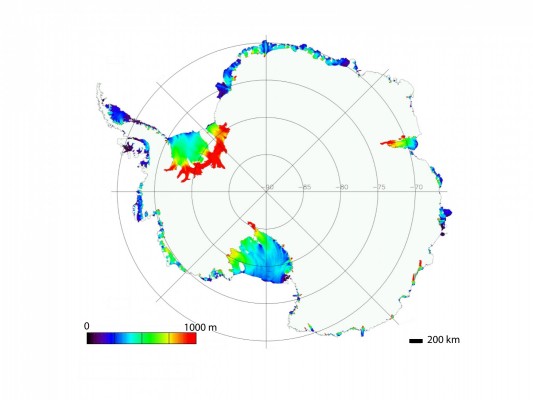December 2014, 11:50 p.m., the sun licks the horizon on Derwael ice rise; It’s time to go back to the tent … The shot was taken during the 2014 IceCon Field campaign in East Antarctica (read Brice’s blog post telllling about his first journey to Antarctica). Here, you can also read about the 2016 field season of the IceCon project, which started just a few days ago.
Image of the Week — Greetings from Antarctica
Christmas greetings from people at Rothera Research Station, Adelaide Island, Antarctica. Rothera, which is the British Antarctic Survey’s largest base in Antarctica, is a centre for marine biology and gateway for getting scientists into their deep field camps. Christmas Day is a regular working day for the staff of around 90. However the chefs will be getting everyone into the festive spiri ...[Read More]
Image of the Week: Atmospheric CO2 from ice cores
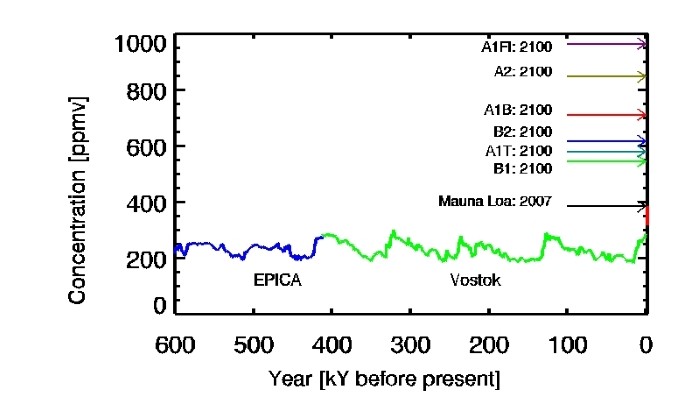
The measurements of atmospheric CO2 levels at Manu Loa, Hawaii read 401.01ppm on the 7th of December this year. To understand the significance of this number, you just need to look at the figure above from the 4th IPCC report. It shows the changes in CO2 concentrations during the past 800,000 years based on ice core measurements. Values have fluctuated between 190ppm and 280ppm. In other words, bo ...[Read More]
Image of the Week: Under the Sea
Always wondered how it looks like under the sea ice? Getting an answer is simpler than you might think: Just go out to the front of McMurdo ice shelf in Antarctica and drill a tube into the sea ice. Then let people climb down and take pictures of the ice from below. More information: – Photo taken by Marcus Arnold, Gateway Antarctica, University of Canterbury during his November 2015, Antarc ...[Read More]
Sunshine, ice cores, buckets and ALE: Antarctic Fieldwork
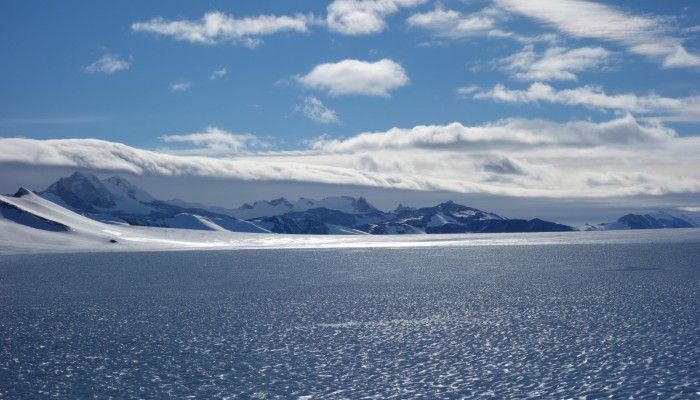
My Antarctic adventure started from Punta Arenas at the bottom of Chile, opposite Tierra del Fuego, on New Years Eve 2014 after a long journey from Heathrow via São Paulo and Santiago. Punta Arenas Punta Arenas is where Shackleton organised the rescue of his men from Elephant Island after his voyage to South Georgia in the James Caird. It is also where I met my PhD supervisors Chris Fogwill and Ch ...[Read More]
Image of the Week: Antarctic ice-shelf thickness
Thickness of floating ice shelves in Antarctica. Ice thickness is greatest close to the grounding line where it can reach 1000 meters or more (red). Away from the grounding line, the ice rapidly thins to reach a few hundreds of meters at the calving front. Ice thickness varies greatly from one ice shelf to another. Within ice shelves, “streams of ice” can be spotted originating from in ...[Read More]
Image of the week : formation of an ice rise
Deglaciation and formation of an ice rise with the ice-sheet model BISICLES. The simulation starts with an ice sheet in steady state that overrides a topographic high in the bed, close to the calving front. The sea level is then forced to rise steadily with 1 cm per year during 15 thousand years, and the simulation goes on until the ice sheet reaches steady state. The animation below shows that t ...[Read More]
Ice Nomads: The iSTAR traverse of Pine Island Glacier, West Antarctica
It’s the 2nd December 2013 and I find myself in one of those rare occasions in life where I feel I need to pinch myself to see if I’m dreaming. Why? Somehow I’m in control of a British Antarctic Survey De Havilland Twin Otter aircraft flying over the white featureless expanse of the West Antarctic Ice Sheet. I’m part of a team of 12 heading to Pine Island Glacier, a remote ice stream 75°S and arou ...[Read More]
My first journey to Antarctica – Brice Van Liefferinge
19 November 2014, the Iliuchine 76 gently lands on the runway of the Russian Antarctic station, Novolazarevskaya, in Dronning Maud Land. For the first time, I’m in Antarctica! It is 4 o’clock in the morning and we need to hurriedly offload 2 tons of material intended for our field mission near the Belgian Princess Elisabeth Station. I’m deeply impressed by the landscape although it is dotted with ...[Read More]

